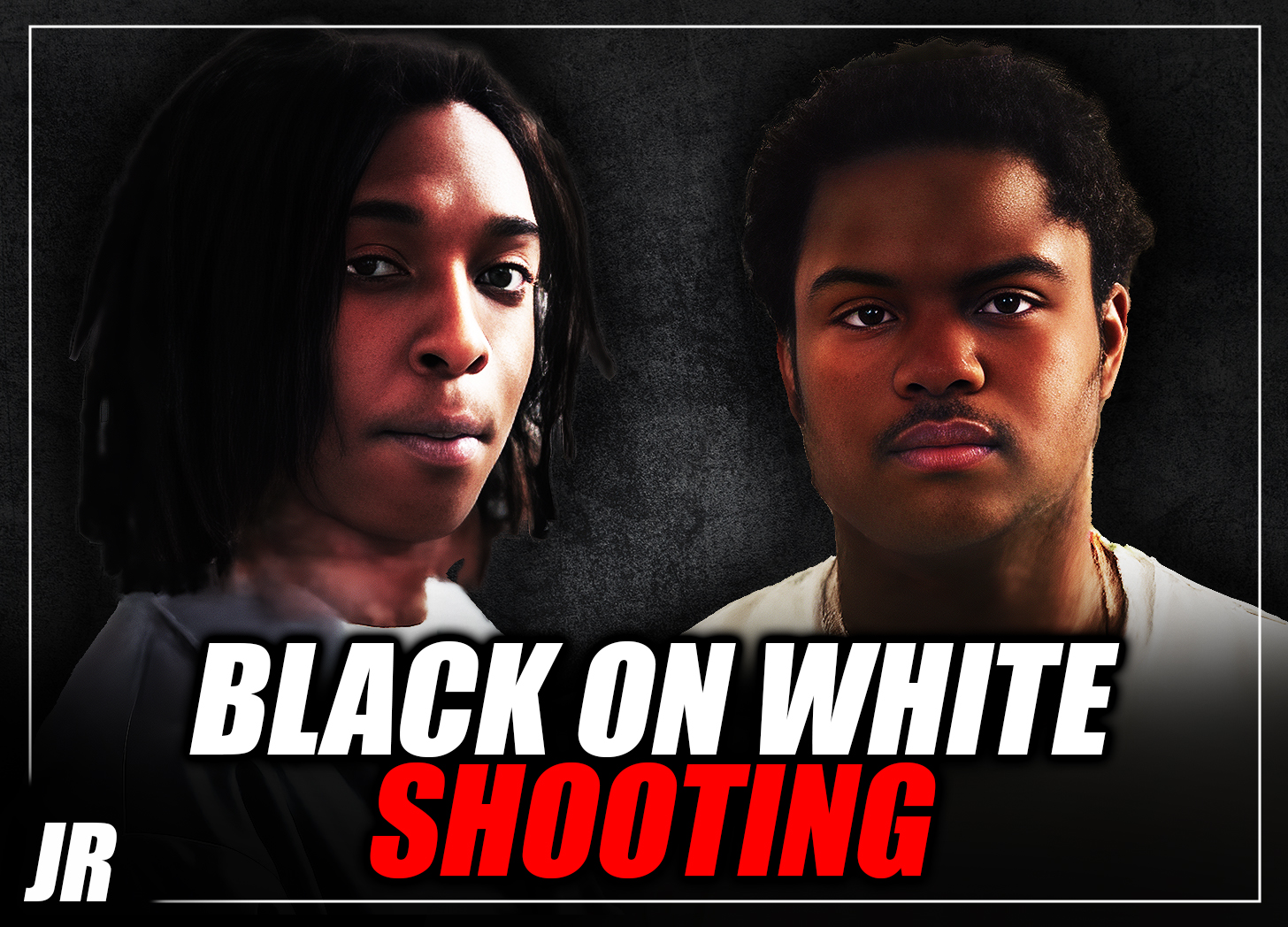By SAM CALDWELL and TREY GARRISON
Waukesha, WI – On the seventh day of the trial of accused anti-White terrorist Darrell E. Brooks, the court continued to hear the eyewitness testimonies of those personally affected by the attack, allowing time for direct and cross-examination by both state prosecutors and the defendant.
Emotions ran high throughout the day as victims had to relive their painful experiences almost one year ago by way of graphic video and audio evidence but were also forced to stare into the eyes of the suspected killer and suffer his seemingly irrelevant questions and a myriad of impotent objections.
The state’s more than 70 felony charges against Brooks include six counts of first-degree intentional homicide with a dangerous weapon, 61 counts of recklessly endangering safety with a dangerous weapon, six counts of hit-and-run involving death, and two counts of bail jumping. He also faces two misdemeanor counts of domestic abuse-battery.

Brooks, a known career criminal, and a registered sex offender, is charged with murdering six and seriously wounding more than 60 people in the deadly 2021 Waukesha Christmas parade attack in Waukesha, the primarily White town 30 minutes west of Milwaukee. Brooks’ red SUV plowed through parade marchers, apparently targeting White people.
The prosecution has still not mentioned or questioned Brooks’ extensive, documented history of anti-White statements and hate, which preceded the terror attack on the Waukesha Christmas parade.
Before the jury was brought in, Waukesha County Circuit Judge Jennifer Dorow ruled against a number of Brooks’ continued pseudo-legal “sovereign citizens” motions, questioning the court and state’s authority to bring criminal action. Sovereign citizens’ frivolous, quasi-legal arguments hold that only individual people can bring legal action in court, not governments acting on behalf of their citizenry in the form of municipal, state, or federal prosecution or action for criminal or civil allegations.
Despite an indulgence of warnings, Brooks would bring up elements of this in his cross-examination of witnesses multiple times throughout the day.
First Witness: Kelly Grabow

Kelly Grabow, who works at a local logistics firm that had a float in the parade, was walking with her then 9-year-old daughter, Adelia. The two were dressed in costumes, Adelia as Cindy Lou Hoo from The Grinch story and Grabow as a Christmas elf, when Brooks’ SUV hit them.
Waukesha County Asst. District Attorney Zachary Wittchow asked what happened that night.
“We were struck by a vehicle. All I saw was the hood of a red vehicle, and I hit the red vehicle and rolled down to the side,” Grabow said. “I saw the tire go directly in front of my face.”

Visibly shaken, she emotionally described the scene when the red SUV stuck her and her daughter and then had to sit through multiple viewings of video from the night of that scene. Grabow then described the extensive injuries she and her daughter suffered.
Adding insult to those injuries, Brooks then got to speak to the White victim. In his cross-examination, he questioned Grabow’s recall of details, apparently without the context she’d just been hit by a car. He then continued with his “sovereign citizens” tactic of questioning whether Grabow knew the “plaintiff” in the case.
Second Witness: Jeff Rogers

Jeff Rogers is president of the Waukesha Blazers Youth Baseball program and participated in the 2021 Christmas parade. His two children, Cayden and Rylee, walked the parade with their father and several others involved in the youth sports program.
Jackson Sparks, 8, was part of that group. Sparks was the young boy killed in the attack, one of the six killed that night. Sparks’ brother was also struck but had non-fatal injuries, along with other members of the Waukesha Blazers party.
Like Grabow and other victims giving testimony, Rogers had to sit and watch a video of Brooks’ red SUV crashing through the parade, describe the chaos and screaming, and then answer questions from the accused killer.
Third Witness: Joshua Kraner

The third witness appointed by the state was Joshua Kraner, also a member of the Blazers team. Kraner described what he saw during the collision, stating that what he saw and heard was “horrific,” with people running up onto the curb, trying to escape the path of the red SUV.
Kraner testified that he was also struck, couldn’t walk, and suffered muscle contusions and bone bruises from the alleged attack. He recounted that he never heard the driver sound the horn, even as it drove over the victims, and that afterward, he was unable to move.
Fourth Witness: Alyssa Gajewski

The fourth witness brought to the stand was Alyssa Gajewski, a coach for the group Xtreme Dance. Gajewski described the group formations during the parade, as well as her team, which was comprised of children ranging from 6th to 8th graders.
As she testified that her group had to stop their routine due to the alleged car attack, Brooks constantly objected, asking for the relevance of the state’s questions. Meanwhile, Gajewski became visibly emotional and began crying on the stand.
The state then had Gajewski list the children that were injured during the collision and played a video of her team being struck by the red SUV, eliciting more tears. After a barrage of “hearsay” objections from Brooks, Judge Dorow interjected and dressed him down. Brooks also uttered multiple comments under his breath, leading Dorow to command him to stop.
Gajewski recounted visiting each of her students in the hospital and observing their condition. She mentioned one dancer, in particular, Julia, who was placed in a hospital wheelchair, going in and out of consciousness while seizing and vomiting.
She also noted that the emotional stress of such a horrific attack was so great that she blacked out during the incident and could not recall certain details.
Brooks: “Was that the first time you ever had a blackout?”
Gajewski: “Yes.”
Brooks: “Any idea what caused it?”
Gajewski: “Stress. Shock.”
The court then broke for lunch, and Dorow told Brooks he didn’t understand hearsay in a legal sense. She told him she hoped he wasn’t interjecting simply to cause an interruption, kindly offered him some sources to read, and granted advice on how to voice objections.
Fifth Witness: Jaimie Sutton

The fifth witness called to the stand was Jaimie Sutton, also a member of the Xtreme Dance group. She coached a team of dancers aged 8-11-years-old. Sutton was shown a video of the parade attack where panicked screams were audible.
She testified that while at the rear of the group, she heard yelling and screaming. When she turned her head to determine the cause, she saw a red car drive past that was “already hitting our girls.” She then tried to reunite children with their parents and stayed with those who were remaining inside a nearby store for safety.
During cross-examination, Brooks tried to discredit the witness by questioning why she called it a car, not an SUV. Sutton replied that she refers to all vehicles as cars. She also testified that the car was going so fast that she initially thought the brakes had failed, never thinking the driver could be doing this intentionally for a moment.
Sixth Witness: Michael Carpenter

Next, the state brought Michael Carpenter to the stand, a Waukesha Police Detective of 12 years. He specializes in digital analysis and worked on analyzing the speed of the vehicle in the alleged attack. By comparing the surveillance cameras’ frame rate and the vehicle’s placement in the frame, Carpenter was able to produce an educated estimate of the SUV’s velocity. He testified that the SUV was traveling between 33.7 to 34.6 miles per hour.
Brooks tried to cast doubt on the speed analysis but mischaracterized Carpenter’s statements on variable framerate footage and tried to apply it to the entire analysis. He then asked if there was any possibility that miscalculations were made. Still, Carpenter detailed the classes he took and the certifications he earned and cited 80 hours of training in this area.
During a brief redirect, the state prosecutors made it clear to the jury that Carpenter’s technology was not brand new and had been used in many court cases across the country before this case.
Seventh Witness: Debora Ramirez

The state then brought Debora Ramirez to the stand. She was at the Waukesha Christmas Parade with her boyfriend and three children. She and her 12-year-old son Isaac were both injured during the attack, and the rest of the witness testimony mirrored many of the same emotional highs and lows of the previous witnesses.
“By the time that I finally tried to move, it was already like, right at us, and I was hit on my left foot, left leg,” she said. “It was on top of my left foot. … The tire went over my foot.”
When describing the injuries she sustained from the attack—which ranged from a hematoma in her left toe and a badly sprained ankle—Brooks asked her why she waited a full day before going to urgent care as if the delay would somehow help his case. “I chose to wait until the next day since I knew I was hurt, but I did not need immediate attention as other people did,” she replied.
While there were no major developments to report during this witness testimony, it was interesting to note that Brooks’s demeanor appeared to have changed once he was able to cross-examine a non-White individual with which he had no prior relationship. He appeared more friendly and less hostile. One anonymous Telegram user, who had been following the case, noted, “Notice he’s being more polite to a non-White.”

The Justice Report will continue to provide daily coverage of the trial.
For background on Brooks and his alleged anti-White crimes, read a summary by Justice Report. To view the National Justice Party/Media2Rise documentary on Brooks and the Waukesha attack, click here.
Have a story? Please forward any tips or leads to the editors at [email protected]





















